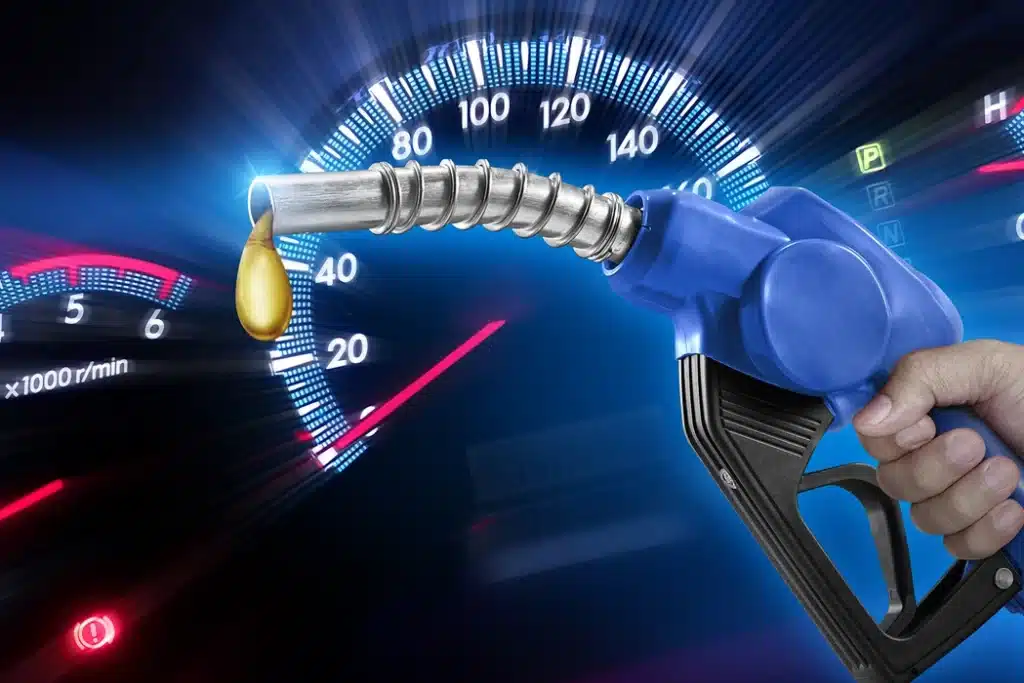In today’s rapidly evolving business landscape, data-driven decision making has emerged as a powerful tool in equipment management. By leveraging the vast amount of data available, organizations can make informed choices that drive operational efficiency and maximize productivity. Among the various technologies contributing to data-driven decision making, GPS tracking devices play a crucial role.
These devices provide real-time location information, enabling organizations to accurately track their equipment and collect valuable data. By harnessing the power of GPS tracking devices, businesses can access crucial insights into equipment utilization, maintenance needs, and overall operational performance. This data-driven approach empowers decision-makers to optimize their equipment management strategies, minimize downtime, and enhance resource allocation. The significance of GPS tracking devices lies in their ability to generate accurate and actionable tracking data, which forms the foundation for informed decision making in equipment management.
In this blog post, we will delve into the concept of data-driven decision making in equipment management and highlight the significance of GPS tracking devices in generating valuable tracking data for informed decision making. By exploring the potential of these devices, we aim to equip you with insights on how to harness their power and optimize your equipment management practices. The use of GPS tracking devices is key to unlocking valuable insights and empowering you to make informed decisions in equipment management.
GPS Tracking Device Data: Unveiling Equipment Performance
GPS tracking devices serve as powerful tools for capturing valuable data related to equipment performance. These devices can collect information such as operating hours, fuel consumption, and idle time. By continuously tracking and recording these metrics, organizations gain a comprehensive understanding of how their equipment operates in real-world scenarios.
The availability of tracking data brings numerous benefits when it comes to assessing equipment efficiency and optimizing its utilization. By analyzing this data, decision-makers can identify patterns and trends, enabling them to make data-driven decisions. Tracking data allows for the detection of potential performance issues, such as excessive idle time or fuel inefficiency, leading to proactive maintenance and optimization strategies. Moreover, it enables organizations to optimize equipment utilization by identifying underutilized assets or potential overlaps in usage.
Case Study #1:
To illustrate the power of tracking data in making data-driven decisions, let’s consider an ambulance fleet that utilizes GPS tracking devices in their vehicles. In emergency situations, every minute counts and can be a matter of life or death. The ability to quickly dispatch the closest ambulance to the scene is crucial. In this instance, GPS tracking technology has significantly improved response time, ensuring that vital moments are not wasted.
Before implementing ambulance GPS tracking, dispatchers relied on estimations and guesswork to determine the nearest ambulance. With the introduction of GPS tracking software, dispatchers can now accurately identify the closest available ambulance to the emergency location in real-time. This eliminates any uncertainties and enables dispatchers to promptly send out the appropriate ambulance.
The benefits extend to the paramedics as well. With the ambulance GPS tracking device, paramedics no longer need to rely on their memory to find the fastest route to the emergency site. The GPS system calculates and provides turn-by-turn directions, ensuring paramedics can focus solely on reaching the scene quickly and efficiently. Even when emergencies occur in remote locations, the GPS system guides them accurately, preventing any potential delays due to getting lost.
GPS tracking devices take response time reduction to the next level. With a refresh rate of three seconds, the system provides up-to-date monitoring of ambulance locations. This real-time tracking allows dispatchers to locate the nearest available vehicle within seconds when an emergency call is received. Furthermore, the system also monitors when ambulance sirens are activated or deactivated. Dispatchers can monitor the ambulances in real-time, identifying which vehicles are en route to emergencies and which ones are available for dispatch.
Case Study #2:
In another example, GPS tracking devices offer new opportunities in an unexpected area – schools and student transportation. BusETA, a school bus tracking system, offers intelligent data and real-time insights to school administrators, parents, and drivers. Equipping school buses with electronic tracking devices has resulted in significant time, cost, and resource savings. The integration of GPS technology with BusETA software provides administrators with a comprehensive overview of their entire bus fleet operations, from start to finish.
One of the key advantages of BusETA is the ability to share real-time data with parents, allowing them to track their child’s school bus location effortlessly. The app eliminates the need for parents to frequently call the school office for bus arrival updates. With BusETA, parents can access accurate information on their mobile devices, ensuring a smarter and more convenient school bus experience.
The system functions by providing real-time arrival and departure information, ensuring parents and administrators are constantly informed. BusETA incorporates features like driver time monitoring, attendance tracking, and student ridership information. Parents and administrators receive notifications on bus locations, arrivals, and student boarding or departure. Additionally, the software allows administrators to set routes, assign vehicles, and schedules, enabling live updates for parents through the mobile app.
BusETA is integrated with the ZenduiT ecosystem, offering enhanced benefits such as multiple route creation, traveler monitoring, and emergency data logging. The telematics data collected through BusETA provides insights into vehicle maintenance, route optimization, and student safety.
The advantages of school bus tracking are significant. BusETA provides tools to optimize fleet performance, improve routing efficiency, and offer detailed reporting and analysis. Real-time tracking offers valuable data sets for administrators, including comparative performance analysis, duration of routes, and number of stops performed. It also offers insights into critical maintenance needs, ensuring fleet optimization and student safety.
The system ensures peak efficiency with safety data points that identify driving patterns and aggressive behaviors, enabling driver coaching for improved safety and performance. With rugged GPS hardware and reliable software, school administrators have access to critical vehicle location data in real-time, ensuring streamlined daily processes.
BusETA also presents possibilities for student tracking beyond bus rides. By using portable traveler tags, students’ whereabouts can be accurately monitored throughout the school day. This technology offers flexible and intuitive solutions for parents, drivers, and administrators. It allows parents to receive real-time alerts when their child boards or departs the bus, ensuring peace of mind and increased safety.
Student tracking through electronic devices has become increasingly common, providing insights into attendance, academic performance, and administrative efficiencies. By utilizing real data, student tracking enhances safety and streamlines various processes within schools.
These examples highlight how tracking data uncovers insights into equipment performance, enabling organizations to make data-driven decisions. By leveraging this information, businesses can optimize equipment efficiency, reduce costs, and enhance overall operational performance.
Utilization Patterns: Maximizing Equipment Efficiency
GPS tracking devices offer valuable insights into equipment utilization by providing data on factors such as usage frequency, duration, and location. This data allows organizations to monitor how frequently equipment is being used, where it is being deployed, and for how long. By capturing these utilization patterns, businesses gain a comprehensive understanding of their equipment’s operational dynamics.
The utilization patterns derived from tracking data empower businesses to make informed decisions regarding equipment allocation and optimization. By analyzing the data, organizations can identify underutilized assets that may be better deployed elsewhere or repurposed. Similarly, they can detect instances of equipment being overused or allocated to locations where it is not the most efficient choice. Armed with this information, decision-makers can optimize equipment allocation, ensuring that each asset is utilized to its full potential, thereby maximizing efficiency and productivity.
For example, a manufacturing plant utilizing GPS tracking devices can analyze the utilization patterns of their machinery. They may discover that certain equipment remains idle for extended periods during specific shifts or that some assets are consistently underutilized compared to others. By reallocating or redistributing these assets, the plant can optimize their equipment utilization, reduce idle time, and improve overall operational efficiency.
Data-driven decision making has a significant impact on reducing equipment downtime and maximizing operational efficiency. By leveraging utilization patterns derived from tracking data, businesses can proactively schedule maintenance activities, minimizing unexpected breakdowns and downtime. They can also optimize preventive maintenance schedules based on actual equipment usage, ensuring that maintenance tasks are performed when necessary and not unnecessarily disrupting operations. This data-driven approach allows businesses to maintain their equipment at optimal levels, reducing costly repairs, and maximizing uptime.
Moreover, by utilizing tracking data to make informed decisions, businesses can optimize workflows, streamline operations, and improve resource allocation. This results in enhanced productivity, reduced costs, and improved customer satisfaction.
Overall, harnessing utilization patterns through GPS tracking devices enables businesses to make data-driven decisions that maximize equipment efficiency, minimize downtime, and enhance operational performance.
Maintenance Needs: Proactive Equipment Management
GPS tracking devices play a crucial role in monitoring equipment health and maintenance needs. These devices provide real-time data on various parameters such as engine performance, temperature, and usage patterns. By continuously tracking this information, organizations can gain valuable insights into the condition of their equipment.
The tracking data obtained from GPS devices offers significant benefits when it comes to scheduling preventative maintenance, tracking service history, and identifying potential issues before they escalate. With access to real-time data, businesses can proactively schedule maintenance tasks based on equipment usage and performance trends. This proactive approach helps prevent unexpected breakdowns, reduces downtime, and ensures that equipment remains in optimal working condition.
Additionally, tracking data allows organizations to maintain comprehensive service histories for each asset, enabling them to track maintenance tasks, identify recurring issues, and ensure timely inspections.
For instance, a logistics company utilizing GPS tracking devices can monitor the engine performance and usage patterns of their delivery vehicles. If the tracking data indicates a decrease in fuel efficiency or the emergence of a consistent issue, the company can schedule preventative maintenance to address the problem before it worsens, avoiding costly repairs or vehicle breakdowns during crucial delivery operations.
Data-driven decision making based on maintenance data has a direct impact on enhancing equipment reliability, minimizing breakdowns, and extending the overall lifespan of the equipment. By analyzing the tracking data, organizations can identify patterns or anomalies that may indicate potential equipment failures. This proactive identification of issues allows for timely intervention, reducing the likelihood of breakdowns and maximizing equipment uptime.
Furthermore, leveraging maintenance data enables businesses to optimize their maintenance schedules, ensuring that inspections, servicing, and repairs are performed at the most appropriate intervals. This targeted approach not only enhances equipment reliability but also extends its lifespan, reducing the need for premature replacements and generating cost savings in the long run.
Predictive Analytics: Anticipating Equipment Challenges
When GPS tracking devices are combined with predictive analytics, organizations can gain the ability to forecast equipment issues and challenges. By analyzing the tracking data alongside historical performance data, businesses can identify patterns and trends that may indicate potential equipment failures or maintenance needs in the future. This integration of GPS tracking devices and predictive analytics allows for a proactive approach to equipment management.
Predictive analytics offers numerous advantages in equipment management by enabling organizations to identify patterns, predict failures, and take proactive actions to minimize downtime and optimize equipment performance. By leveraging advanced algorithms and machine learning techniques, predictive analytics can detect anomalies and deviations from normal equipment behavior, providing early warnings for potential failures.
This proactive approach allows businesses to schedule maintenance tasks, order necessary parts, or take other preventive measures to address issues before they lead to costly breakdowns or disruptions in operations. Moreover, predictive analytics facilitates the optimization of spare parts inventory management, as organizations can accurately predict when specific components are likely to require replacement.
Case Study #1:
In one example, the COVID-19 pandemic created unprecedented challenges for businesses and disrupted daily operations worldwide. As the world awaited a vaccine, the focus shifted to its widespread distribution. However, transporting vaccines, particularly on a global scale, posed significant logistical hurdles due to their fragile nature and strict temperature requirements.
The capacity of the cold-chain network is insufficient to support distribution at the required scale. Vaccines are high-value commodities that demand a climate-controlled environment to maintain their quality and effectiveness throughout the transportation process.
Transporting COVID-19 vaccines presented additional difficulties, as some required stringent temperature conditions, including transportation at temperatures below -80°C. This posed obstacles for logistics companies, as only a subset of available infrastructure and equipment could handle these specialized transport requirements.
Furthermore, the reduction in commercial passenger flights and global travel restrictions created disruptions in the distribution chain. Specialized freight trucks played a crucial role in delivering vaccines to rural or remote locations, compensating for the reduced availability of passenger aircraft for transportation.
To address these challenges, telematics technology offered invaluable support in the transportation of temperature-sensitive cargo. Precision temperature sensors provided accurate ambient temperature readings of the container, taking into account variations caused by door openings and closures. Real-time updates and alerts enabled drivers and fleet managers to intervene promptly when temperature issues arise, mitigating risks to vaccine quality.
In addition to temperature monitoring, telematics sensors measured and reported moisture and humidity levels in real-time. Optical sensors and motion detection sensors helped monitor door status, preventing temperature fluctuations caused by frequent door openings. By promptly notifying drivers and fleet managers of any door-related issues, these sensors facilitated timely actions to avoid costly mistakes.
Smart analytics and troubleshooting systems simplified the process of identifying root causes when temperature breaches did occur. Telematics tools offered real-time analytics, historical data, and generated cold-chain custody reports. Fleet managers could access and retrieve data from anywhere, facilitating issue identification and resolution.
Cloud-based data storage solutions further streamlined the management of complex data history and paperwork. The integration of various sensors into a single plug-and-play tracking device ensured low-cost and easy installation, minimizing disruptions to fleet operations.
This example demonstrates how the combination of GPS tracking devices and predictive analytics empowers organizations to anticipate equipment challenges, take proactive actions, minimize downtime, and optimize overall equipment performance. Predictive analytics provides a valuable tool in equipment management, enabling businesses to make data-driven decisions and enhance operational efficiency.
Conclusion
Throughout this blog post, we have explored the concept of data-driven decision making in equipment management and highlighted the significance of GPS tracking devices in generating valuable tracking data. We discussed how tracking data unveils equipment performance, maximizes equipment efficiency through utilization patterns, enables proactive maintenance based on maintenance needs, and anticipates challenges through predictive analytics.
It is evident that data-driven decision making, facilitated by GPS tracking devices, plays a crucial role in optimizing equipment management practices. By harnessing the power of tracking data, businesses gain valuable insights into equipment performance, utilization patterns, maintenance needs, and potential challenges. These insights empower decision-makers to make informed choices, resulting in enhanced efficiency, minimized downtime, and improved operational performance.
As businesses strive for success in equipment management, it is essential to embrace the opportunities presented by tracking data and data-driven decision making. We encourage organizations to leverage the tracking data provided by GPS devices to optimize equipment performance, enhance efficiency, and make informed decisions. By analyzing utilization patterns, identifying maintenance needs, and utilizing predictive analytics, businesses can stay ahead of equipment challenges, minimize downtime, and extend the overall lifespan of their assets.
In conclusion, data-driven decision making through GPS tracking devices is a powerful tool in equipment management. By embracing tracking data and adopting a proactive approach, businesses can unlock the full potential of their equipment, improve operational efficiency, and achieve long-term success in their equipment management endeavors.
Contact us today to discover how our GPS tracking solutions can transform your equipment management processes. Our team of experts is ready to assist you in implementing the right GPS tracking devices, analyzing tracking data, and unlocking valuable insights for informed decision making.








































